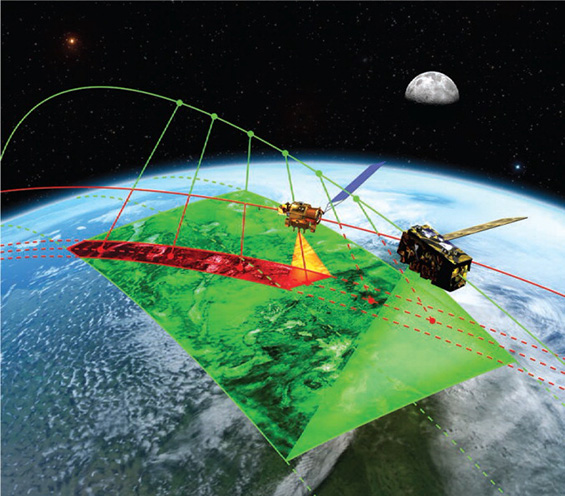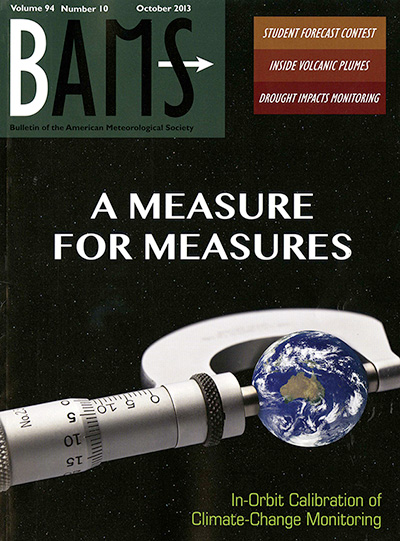“A Measure for Measures:” SSEC Technologies Benchmark Climate from Space
Detection and prediction of decadal climate trends is crucially dependent on the collection of data with extremely high accuracy and information content. Collecting the necessary data is the goal of NASA’s proposed Climate Absolute Radiance and Refractivity Observatory (CLARREO) mission. The mission will support the need for long-term data and provide an extremely high degree of accuracy in global satellite observations. CLARREO observations will be important to decision makers as they consider the complexities of global climate change.
According to Hank Revercomb, Director of the Space Science and Engineering Center (SSEC) and CLARREO team member, “The fundamental purpose of CLARREO is to provide an irrefutable measure of the current state of the Earth’s climate as a reference or benchmark for climate model testing and as a standard for future comparisons.”
Revercomb is co-author on a paper just published in the Bulletin of the American Meteorological Society (BAMS) which presents details and potential value of the CLARREO mission. Symbolizing the mission, the cover illustration shows the Earth benchmarked, or measured to high accuracy with respect to international standards, with a micrometer from space.
The earliest satellite measurements of the Earth’s environment extend back to SSEC co-founder Verner Suomi’s ground-breaking radiation budget experiment launched on the Explorer 7 satellite in 1959. From that initial study until today, satellite instruments have been measuring the total, wavelength-averaged solar and infrared contributions to assess the energy balance of the planet.
In contrast, CLARREO’s instruments will provide full spectra of both the solar-reflected and infrared-emitted radiances that contain much more information about the detailed structure of the climate state. These high spectral resolution radiances, along with atmospheric refractivity from GPS occultation, will be used to test climate model predictions with greater sensitivity to decadal changes.
Since 2008, SSEC scientists and engineers have developed and thoroughly tested a prototype of the new infrared instrumentation needed for CLARREO. The successful prototype consists of a Calibrated Fourier Transform Spectrometer with especially low biases and a system to verify and test the spectrometer directly on orbit.
SSEC’s diligence has resulted in a milestone achievement for CLARREO. In September 2013, NASA’s Earth Science Technology Office announced that SSEC’s prototype for the CLARREO infrared instrumentation achieved the ‘technological readiness’ to proceed with a spaceflight mission.
A key part of CLARREO’s on-orbit verification and test system is the On-Orbit Absolute Radiance Standard (OARS) that uses multiple phase change cells for absolute temperature calibration. The phase change materials are gallium, water, and mercury, each of which has a different melt point temperature. Detecting when each of the substances melts enables the OARS instrument to precisely establish a fundamental temperature scale on orbit. The OARS also employs a “heated halo” source for measuring its spectral emissivity, or absorption, on orbit. Emissivity is the other essential property for determining the radiance of a reference black body.
“In addition to serving as a benchmark,” Revercomb says, “CLARREO measurements will be used as a transfer standard to improve the calibration of other orbiting instruments, improving the accuracy of data we receive from instruments already in orbit.”

Detail of CLARREO (red orbit track) obtaining data matched in time, space, and angle of view to serve as reference calibration for instruments on a polar orbiting weather satellite (green track). Image courtesy of BAMS.
While the CLARREO mission is scheduled for launch sometime after 2022, the CLARREO team is committed to earlier demonstrations. Under consideration is a flight on the International Space Station, which would deliver a cost-effective option in a good orbit providing frequent overlap with the orbits of other key satellites.
“The cover story in BAMS is a major event,” Revercomb comments. “It shows that the science community is behind the efforts leading to CLARREO. With the instruments on CLARREO, and the accuracy improvements CLARREO can impart to existing missions, we are looking at much better climate assessments in the future.”

